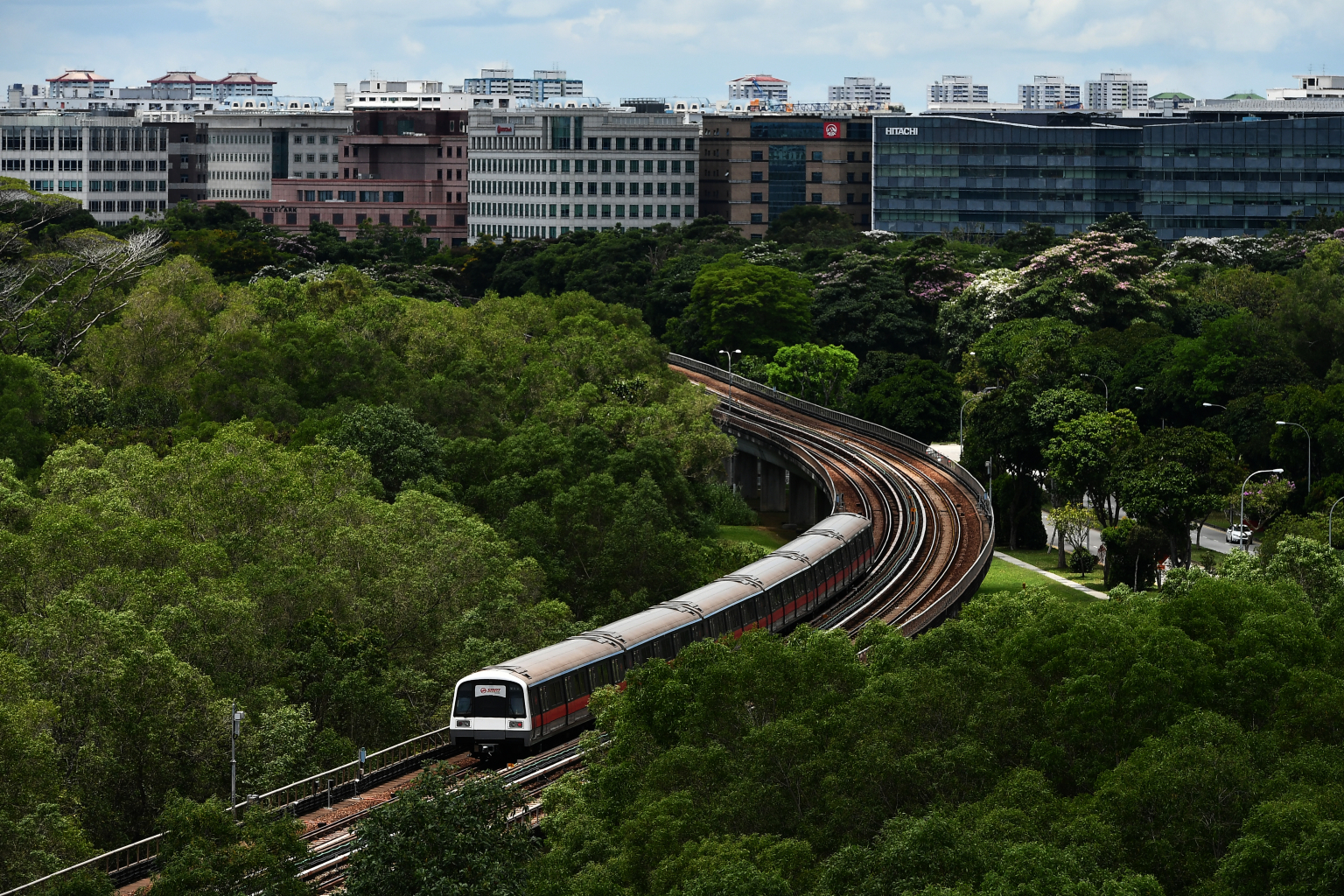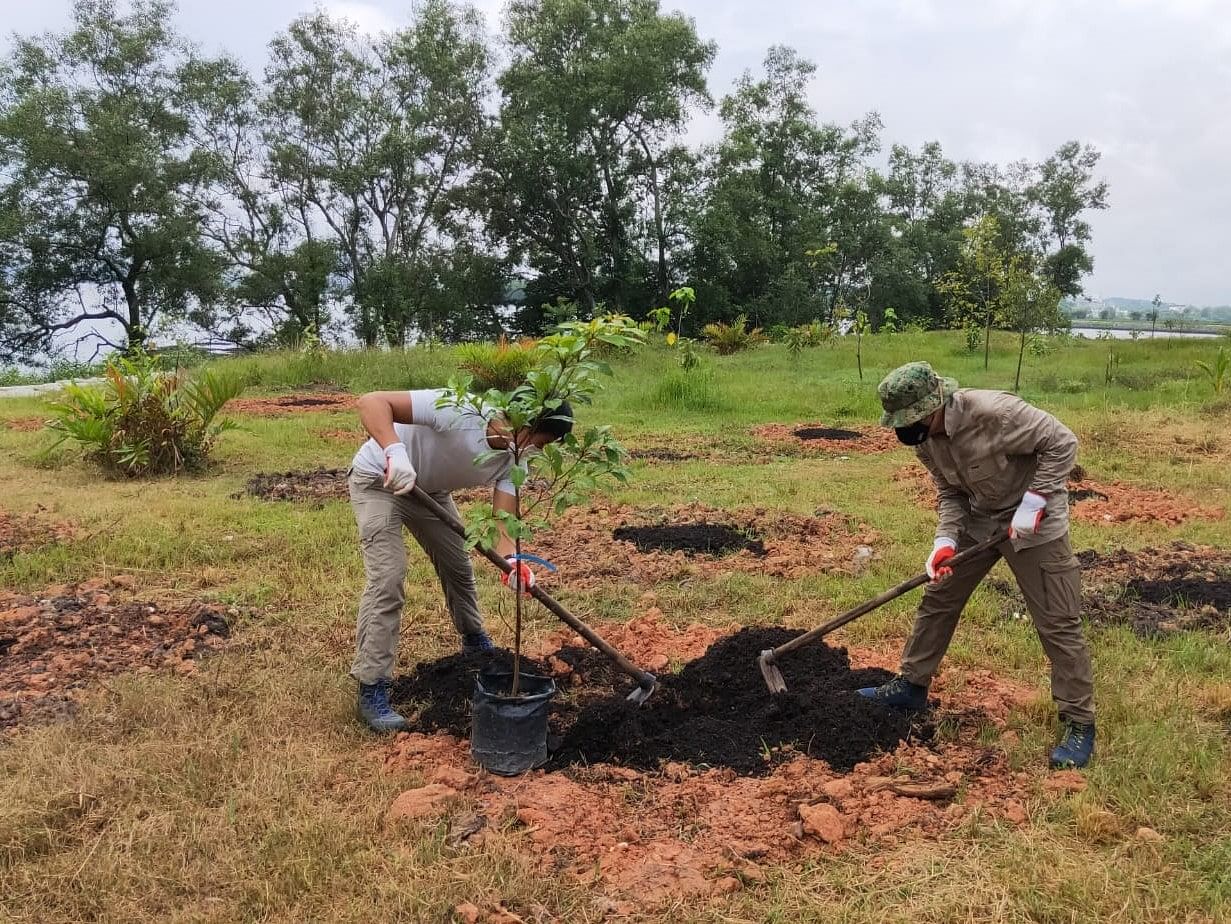ScienceTalk: A million trees more for a City in Nature
Sign up now: Get ST's newsletters delivered to your inbox

Singapore is one of the greenest cities in the world.
ST PHOTO: LIM YAOHUI
Desmond Lee for The Straits Times
Follow topic:
With a choke-hold on travel during the pandemic, Singaporeans have been exploring our island's green spaces more than ever - from visiting nature reserves and parks, to hiking and cycling around the island, or simply taking a walk in neighbourhood parks; and love for our green spaces has blossomed.
Singapore would not be Singapore without its trademark lush foliage embroidering roads, sprouting on sidewalks and peeping from every building.
Our nature reserves are protected emerald gems in the heart of the city, streetscape greenery has been planted across the island, and high-rise buildings are adorned with vertical greenery.
But Singapore has not always been so green.
While the island was covered in dense tropical lowland forests before the early 19th century, these were cleared quickly as Singapore developed and grew as a trading port. By the end of 1880, some 90 per cent of primary rainforest was gone, replaced by settlements and plantations for cash crops.
The greenery we see today is the result of the foresight and careful planning of our pioneers, and the hard work of generations of horticulturalists and conservationists.
In the early years of independence, our founding Prime Minister, the late Mr Lee Kuan Yew, envisioned Singapore as a Garden City with abundant lush greenery and a clean environment. We created tree-lined roads and established more parks as recreational spaces. From there, we pushed on to become a City in a Garden.
The National Parks Board (NParks) added more park connectors, went further to conserve our natural heritage, and involved the community more in our greening efforts.
Some land that formerly had villages, plantations, prawn farms, and other economic activities was left vacant, and these became naturally vegetated over time. Today, Singaporeans can enjoy the greenery at some of these sites, including Sungei Buloh Wetland Reserve, Thomson Nature Park, and Chestnut Nature Park, to name just a few.
As the next bound of our greening journey, the Government is stepping up efforts to transform Singapore into a City in Nature.
To achieve this, we are extending and enhancing our natural capital island-wide, in four key moves over the next decade:
First, expanding our nature park network to better protect and buffer our nature reserves; second, intensifying nature in our gardens and parks; third, integrating nature into the urban environment; and fourth, strengthening connectivity between important green spaces.
The City in Nature vision is one of the five pillars of the Singapore Green Plan 2030 - a national movement for sustainable development.
Given our land constraints, we must find innovative ways to weave nature into our urban fabric - for example, by turning concrete canals into naturalised vegetated waterways and wetlands, which has been done at Bishan-Ang Mo Kio Park and Jurong Lake Gardens.

Rasau Walk at Jurong Lake Gardens.
PHOTO: NPARKS
We must also strive to protect our most ecologically important areas, even as the island continues to develop. By doing so, we can mitigate the effects of climate change and soften the harshness of urbanisation.
And Singaporeans can enjoy a high-quality living environment, and have greater access to nature's benefits on health and well-being.
OneMillionTrees movement
Efforts to achieve our City in Nature vision have something in common: they involve planting a great many more trees.
This is happening through the OneMillionTrees movement, which was launched last year with the support of community partners. The Government wants to partner Singaporeans from all walks of life to be stewards of our island's greenery.
By planting one million more trees across the island between 2020 and 2030, we are doubling our annual tree planting rate from 50,000 trees each year, to 100,000. While it is inevitable that we will lose some greenery to development, we will plant back what is lost, and more.
Already, we have planted over 179,000 trees with the community.
However, the OneMillionTrees movement is not just a quantitative effort to increase the number of trees, or to engage in ornamental planting.
Trees provide many services and offer many benefits. With climate change and more extreme weather conditions, we will experience higher temperatures, particularly in urban areas.
By increasing greenery and planting trees in urban areas such as industrial estates, we can help to mitigate the urban heat island effect. These trees can serve as nature-based solutions to help provide shade and improve air quality, while beautifying the city.
Beyond urban areas, we also plant trees extensively in parks and other green spaces, as well as along roads and park connectors. They are planted in a naturalistic way, using varied native-dominated species, to reflect the look and feel of our natural forests.
For example, along roads we call nature ways, we have planted many trees and shrubs of varying heights. In addition to the existing roadside canopy trees, we are deliberately replicating the natural structures of our forests, by adding shrubs close to the ground, understorey trees that grow under the canopy trees, and finally tall emergent trees breaking out over the canopy.
Such nature ways can be found all over the island already, from Tampines and Woodlands to Jurong and Pasir Panjang. Such naturalistic planting provides more habitats for native biodiversity in existing green spaces. It can also strengthen ecological resilience, by creating natural corridors that allow flora and fauna to move easily between green spaces.

Already, we have planted over 179,000 trees with the community.
PHOTO: ST
We plant trees even in the heart of our core forests, to help enhance degraded forest areas with native rainforest species.
Singapore's Forest Restoration Action Plan was launched in 2019. Under the plan, NParks, together with partners and the community, will plant more than 250,000 trees and shrubs across nature parks and nature reserves. For example, visitors to Kranji Coastal Nature Park may have spotted volunteers hard at work almost every month to restore coastal forest habitat - from preparing the soil and planting saplings, to monitoring the overall health of the forest.
At the same time, volunteers also remove invasive species to allow native rainforests to regenerate.

This is vital to habitat restoration and enhancement works, and is part of NParks' Nature Conservation Masterplan. These efforts will help early secondary rainforests to grow into more mature and biodiverse rainforests over time, and improve habitats for native biodiversity. In turn, our forests will be stronger, and more resilient to climate change.
The OneMillionTrees movement is therefore an important part of our work to constantly strengthen existing green spaces, and to achieve our City in Nature vision.
This is painstaking, long-term work, and we deeply appreciate our community of volunteers and partners, who have rolled up their sleeves and are working with the Government to make our native ecosystems healthier and more resilient. Without their efforts, the OneMillionTrees movement, and its tangible benefits for Singaporeans, would not be possible.
Partnering the Community
The OneMillionTrees movement is about more than just the physical act of planting trees.
By joining this movement, a whole new generation of Singaporeans can build strong bonds and shared experiences with each other, and take on the role of stewarding the greening of Singapore.
As the years pass and the trees grow, they will provide shade and respite not just for us, but also for our children and their children. In this way, each tree planted is a symbol of how we as Singaporeans serve as stewards of our greenery, and our nation.
Our City in Nature and nature conservation efforts, of course, go beyond tree planting and providing more greenery. For instance, the Nature Conservation Masterplan also involves the conservation of existing core habitats, reintroduction of selected species as part of species recovery projects, and applied research in conservation biology and planning.

Trees provide many services and offer many benefits.
PHOTO: ST
In partnership with the community and nature groups, we also study, monitor, and engage in species recovery and habitat enhancement work for native wildlife species such as the Raffles' banded langur, Sunda pangolin, and smooth-coated otter.
Going forward, we will develop a more comprehensive picture of our island-wide ecosystem and ecological connectivity, to help guide long-term land-use planning.
Members of the nature community will be invited to join us in this upstream work, which will add to the data and models which NParks has built up over the years.
In this spirit, we welcome Singaporeans to join us across our whole range of City in Nature efforts - from planting and managing parks as part of our Friends of the Parks initiative, to taking part in our Community In Nature citizen science programmes and counting birds, butterflies, and more.
Together, we can transform Singapore into a City in Nature.
• Mr Desmond Lee is Singapore's Minister for National Development.

